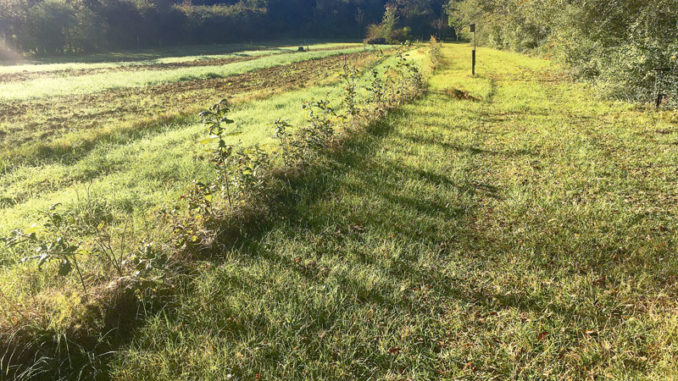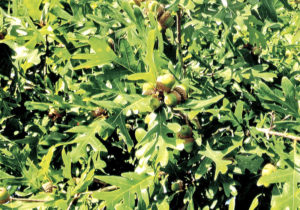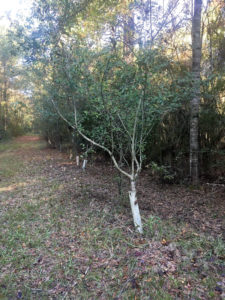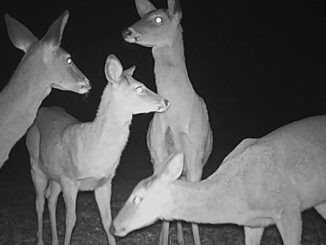
Your land’s trees are an important ingredient for successful deer program.
For many years, Louisiana’s northwestern parishes have had the highest deer harvest in the state. The common factor responsible for this is timber.
These rural parishes have a forested landscape that is intensely managed, thus always providing deer with habitat, food and cover. Louisiana’s deer herds are a reflection of the forest; intensely managed pine forests generally produce bucks that are low on antler mass and body weights; the bottomland hardwood forests produce bucks with heavy antler mass and large body weights; forests with a good hardwood component mixed in with the pine timber produce quality bucks, better than a dominant pine forest but not quite as good as the bottomland tracts.

Consequently, landowners who want to improve their deer habitat should take a close look at their forest landscape. Does the forest contain the desirable hardwood species that benefit deer?
Basically, there are three groups of hardwood trees that provide nutrition for deer. All hunters are familiar with the hard-mast species: oaks, pecans and hickories. The soft-mast species include those trees that produce fruit, such as pears or black cherry. Many of these species are also important as woody browse. The third group would include the light-seeded species such as ash, elm or maple. This group provides browse when the trees are young.
A diverse forest
A good forest survey or inventory will tell you what trees make up your forest and what species you might want to plant. Species diversity is a must and will provide the maximum benefit to deer. From the hard-mast standpoint, oaks and their acorn production are very desirable. Red oaks and white oaks are the two main groups. On our small property, we had plenty of water oaks, willow oaks and a few cherrybark oaks, but no white oaks. Consequently, my focus is on planting white oaks and getting these trees on the landscape. A wildlife biologist or forester can help you determine what you might want to plant to enhance the habitat.
The white oak group includes cow oaks, white oaks, post oaks and overcup oaks. Cow oaks and white oaks are the best for whitetails and are the two species I am planting. The red oak group contains many desirable species, including water oak, cherrybark oak, obtusa oak, willow oak, striped oak and sawtooth oak.
Water oaks are generally not lacking on the landscape. Cherrybark oak acorns are readily eaten by deer, and it is a good timber tree. Sawtooth oaks have been planted for years, and although they drop acorns early, they will pull deer onto the property. Sawtooths do best in an orchard setting. Pecans are good, but they also do best in an orchard setting.
A new player on the scene is the chestnut tree. Dunstan chestnuts have been highly promoted for many years. The American chestnut was once an important wildlife tree but was wiped out by the chestnut blight. The Dunstan variety is blight resistance and produces early. I have two trees that have produced chestnuts for several years, but it does not seem to get the deer excited like sawtooth oak acorns.

Soft-mast trees
The best soft-mast trees that deer seem to relish include pears, black cherry, crabapple, red mulberry, blackgum and persimmon. I would rate the attractive power of a pear tree at the top of the list, but persimmons are not far behind. Wild persimmons come in male and female trees, so one has to have both to have fruit. The grafted ones are probably the best to plant.
Mayhaws are a good tree to have with its fruit production, but again, I have many mayhaws, and deer just don’t seem to get real excited about the fruit. This tree seems to be a drawing card on areas with a high deer population where the competition for food is high. Red mulberry is a great wildlife tree for both animals and birds. The leaves are high in calcium and readily eaten by deer.
The light-seeded mast trees, such as ash, elm and maple, provide browse for deer, and unless you are lacking these in your forest component, they are not too often planted unless one is planting a large, clear-cut site. The fruit of these trees is important to squirrels and birds.
Late winter is the best time to do your tree planting. This provides time for the root system to become established, which is important should drought conditions set in during the late spring or summer. Unless you have the ability to water trees, late spring or early summer plantings may have problems.
Tree protection
With trees such as red mulberry or pears, it is probably best to cage the trees and eliminate browsing by deer. The fact is, deer will browse any newly planted tree, and if the browsing is heavy, it will really reduce your tree growth and set you back a year or two.
Commercial tree tubes are available to protect seedlings, but I prefer a wire cage. Bucks will also rub antlers on young trees and can kill them if they cut into the cambium layer. Monitor your plantings and look for damage, and if the damage is high, caging may be the only way you will ever grow a tree.
Woody shrubs can also be planted on the landscape to increase the desirable shrub species that deer browse. Elderberry, arrowwood and deciduous holly are very desirable. Timber thinning will enhance shrub and small tree growth and keep one from having to do any planting. Once a shrub is on the landscape and producing fruit, the seed source is available for new plants. Timber cuts will also enhance the desirable woody vines that provide nutrition for deer. The hunting season is on, but now is the time to do this work.

